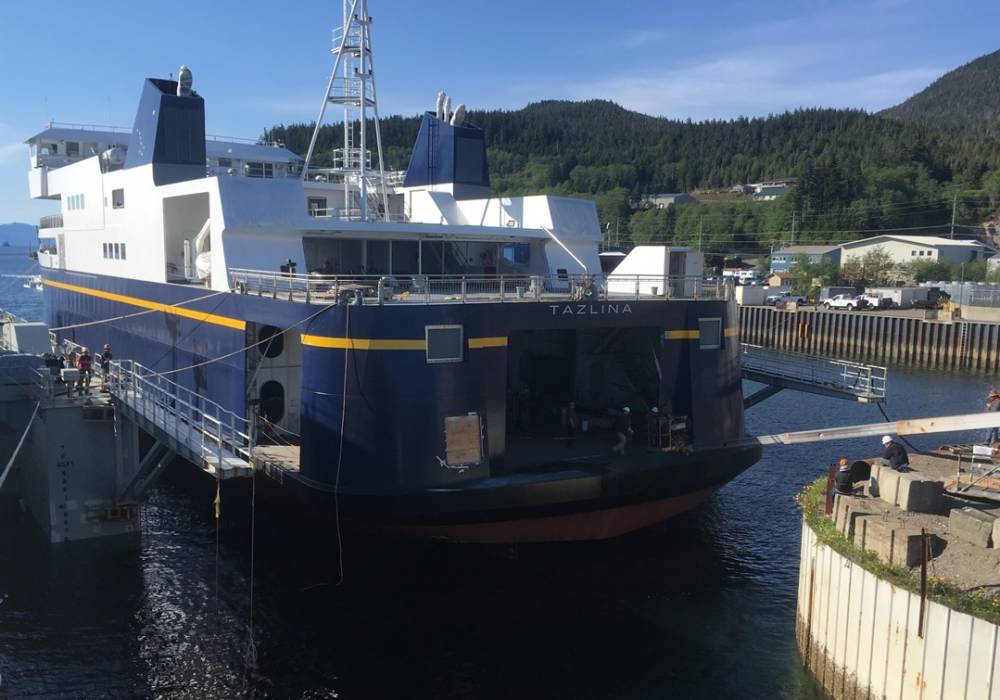
The new Alaska Class ferry Tazlina at the Vigor Alaska shipyard in Ketchikan. (KRBD file photo by Leila Kheiry)
Members of Southeast Conference’s Alaska Marine Highway System Reform Steering Committee gathered in Ketchikan on Friday, the third and final day of Southeast Conference’s fall meeting.
Among the topics addressed was Thursday’s announcement by Department of Transportation Commissioner Marc Luiken that the state hopes to add crew quarters to both new Alaska Class Ferry vessels. The Tazlina is completed, so quarters would have to be added later. The Hubbard is still under construction at the Vigor Alaska shipyard in Ketchikan.
The cost of adding crew quarters would be an estimated $13 million to $15 million for each ship.
Most of the committee members agree crew quarters were a good idea. But, some commented it might be too late and it should have been part of the final design before it went out for construction.
Committee member Joshua Howes runs a tour company in Anchorage. He said it’s frustrating how Alaska Marine Highway System decisions shift with each administration.
“I guess that probably gets to the crux of the issue with the marine highway in my mind, anyway, in that we continue to do things without thinking them all the way through all the time or we change our mind all the time and we have this mismatch of fleets and terminals all over the system,” he said. “If it were a private corporation, your leadership would be fired immediately.”
Dave Kensinger owns Chelan Produce, which sells fruit and vegetables in Southeast. He agreed that the Alaska Class Ferry process was problematic because of political leadership shifts.
“I’m not faulting the current administration for this because I know they got these ferries designed and everything and they were under construction when they came in,” he said. “That’s the other reason we need a board. We need to have that continuity from administration to administration. Without that, I hate to say it, the Marine Highway System is not going to make it.”
Southeast Conference is leading a management reform project for the state ferry system. The current proposal calls for turning the system into a corporation that would be somewhat independent from the state. The goal would be to stabilize funding and remove the ferry system from annual legislative budget battles.
Here is a link with more information about the reform project.








